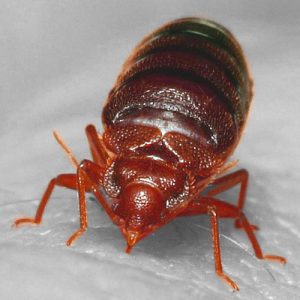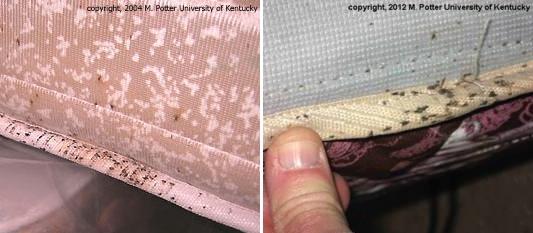There’s been a lot of confusion about the relation between black mold and bed bugs. We’ve heard stories about people misidentifying one for the other. Dealing with bed bugs is never pleasant and such experience may put your health at risk just as black mold does. That’s why it is important to understand the difference and know how to recognize one from the other. Distinguishing them will allow you to take the appropriate action to solve the problem.
In order to clear some of the confusion for our readers, the Black Mold Removal Corner team decided to do a series on bed bugs. Below you will find the most commonly asked questions about bed bugs.
Note: If you have any other questions, just send us a message via our contact us page. And any ideas for other series are also welcomed!
What are Bed Bugs?
Bed bugs are like vampire insects, meaning they feed exclusively on blood. That specificity makes them parasites where the host can either be humans or animals, depending on the species. Another vampire-like characteristic of theirs is that they are mostly active at night (making the feeding easier while the host is asleep).
Bed bugs are small, flat and oval-shaped in appearance, with six legs. At the nymph stage of their development cycle, they are transparent (and red after they have fed on a host). As they grow, they change to a brownish color.
How Big Are Bed Bugs?

Bed bugs’ size varies depending if it is an adult or a juvenile. Adults bed bugs are about 4 to 5 mm long and 1.5 to 3 mm wide (that’s respectively about 0.16 to 0.20 inches long and 0.059 to 0.118 inches wide) while young bed bugs are about 2,5 mm long.
To give you a better idea, adult bed bugs are about the size of an apple seed.
Do Bed Bug Fly?
Unlike fleas, bed bugs cannot fly or jump because they don’t have wings. They can only crawl very quickly and are very good at climbing. That’s why we can find them on curtains, furniture and walls.
Where Do Bed Bugs Come From?
What Causes Bed Bugs?
A common myth about bed bugs is that they are a result of a sanitation issue. That is completely false!

They travel from one place to another via people’s personal belongings. By visiting an infested place (airplane, airport, apartment, hotel, etc…) there’s a possibility that they will be hitchhiking along, looking to make a new home somewhere else.
There’s been a resurgence of bed bugs due to increase international travelling, a decrease in the use of pesticide and the proliferation of second hand objects.
Can You See Bed Bugs?
Bed Bugs can be seen even if they are very tiny. Because they are flat, they can hide during the day in small cracks and crevices close to where we sleep. The best time to see bed bugs is when they are feeding, that is during the night. Look for small crawling creatures on mattresses and in bedding. Other signs of living bed bugs are brown or black spots of dried feces. You may also find transparent, empty shells left by bed bugs when they grow.
How Do You Know If You Have Bed Bugs?
How To Check For Bed Bugs?
An accurate way to check for bed bug infestation is to look for physical clues around your room, in the folds of your bed sheets and along the seams of the mattress. These signs can be: living bugs crawling or hiding; small bloodstains; dead bed bugs; bed bug excrement (very tiny and dark spots); eggs and eggshells; empty, transparent shells.
Bed bugs might hide on the bed frame, headboard, curtains, box springs, furniture, walls or floor. Sometimes they even leave a sweet odor in places where they are in large numbers.
Because bed bugs are very small and good at hiding, if you could not detect them, but you have other signs like bites, it does not mean that there is no infestation. In this case, you should probably hire a specialist to get rid of bed bugs as soon as possible.
Do Bed Bug Itch?
It depends on the individual. It can take up to 14 days for a bed bug bite to appear, but you may also not react to the bites at all and your skin will not develop any signs of being bitten. Some people may also be allergic to bed bug bites. A red mark can appear anywhere on the skin, but usually on the neck, face, arms, legs, or chest (any part of the body exposed to the bed bugs). It is similar to a mosquito bite and may be itchy and irritating. Avoid excessive scratching as it can cause a secondary infection.
Bed Bug Rash?
Bed bug rashes are the body’s reaction after being bitten by a bed bug. You can recognize a rash by the burning feeling (itchiness) and the red color around that burning area (welts). Rashes are found on body area that were exposed to bed bugs while sleeping. Other bug bites or allergies may have a similar effect on your body. The rule of thumb is if you wake up with a rash that you didn’t have the night before, then there’s a good chance that you have bed bugs. Take the time to properly inspect your room for any other signs and if you want to be reassured, seek professional help by contacting a local insect exterminator for a second opinion.
How To Treat Bed Bug Bites?
If you do not find bed bugs in your bed and cannot identify the source of the bites or rash, you should visit your doctor for diagnosis. However, your doctor may not be able to identify bed bug bites as the symptoms are similar to those from other insects or skin conditions.
Usually, no medication is needed to treat bead bug bites. They typically heal in one to two weeks. However, a corticosteroid cream will help relieve bites symptoms such as skin irritation. Your doctor may prescribe one or you can find a cream at your local drugstore.
If the bites itch, wash them first with soap and water. It will help prevent a skin infection. Then you can apply the corticosteroid cream or try the following homemade remedies:
- Apply a paste of baking soda and water on the bites
- Let it dry for about an hour
- Gently rinse it with warm water
There are many other homemade remedies recommendations for bed bugs bites such as rubbing your skin with lemon juice; or applying natural Aloe Vera gel on the affected area (diluted essential Tea Tree Oil or apple cider vinegar can also be used).
If you develop an allergic reaction to bed bug bites or if you feel pain, take oral medication such as over-the-counter antihistamine pills. You can discuss the best remedies for you with your family doctor or your pharmacist.
Finally, it is necessary to consult with a health professional if you experience a severe allergic reaction, you develop blisters or if your skin becomes infected.
Bed Bugs or Black Mold?
The confusion between black mold and bed bugs comes from the fecal stains from bed bugs that look like black mold dots as the stains are dark and tiny. However, in order to differentiate bed bugs infestation from black mold, you should look for other signs as describe above: empty shells, living and dead insects, or eggs.

Also, molds are fungi that spread inside of and outside of your home in mild and humid areas and can cause other severe health problems such as sore throat, migraines, vomiting, wheezing, etc., unlike bed bugs.
In any case, you should get rid of black mold or bed bugs as soon as you detect any signs of infestation. See our other articles to learn what is black mold, common symptoms caused by exposure to black mold and how to eliminate them.
We hope that you find this bed bugs series useful. We tried hard to find the information that would be relevant and presented in a concise format. If there is any aspect that could make it better, please do not hesitate to reach out to us using our contact us page.
The Black Mold Removal Corner Team
